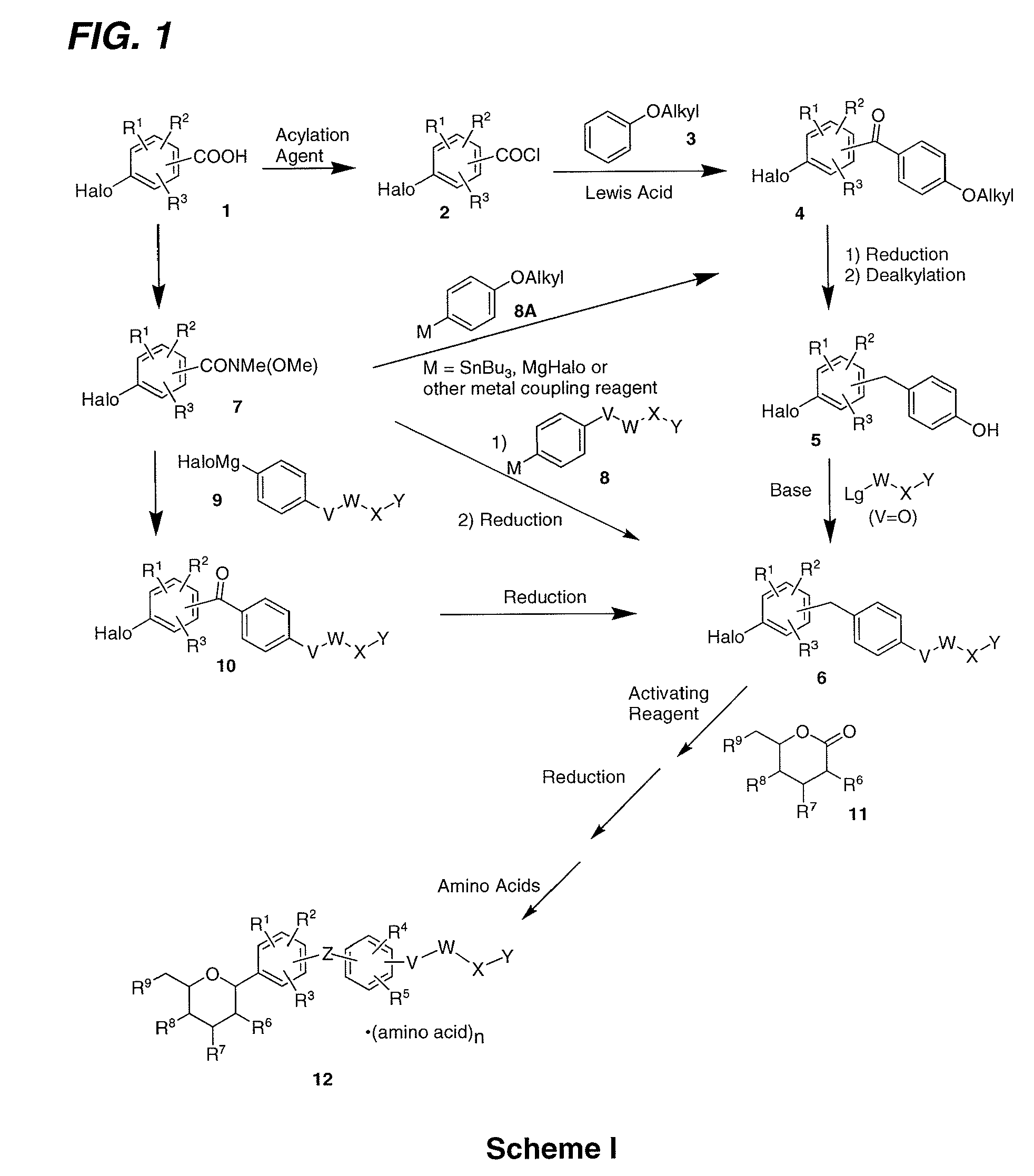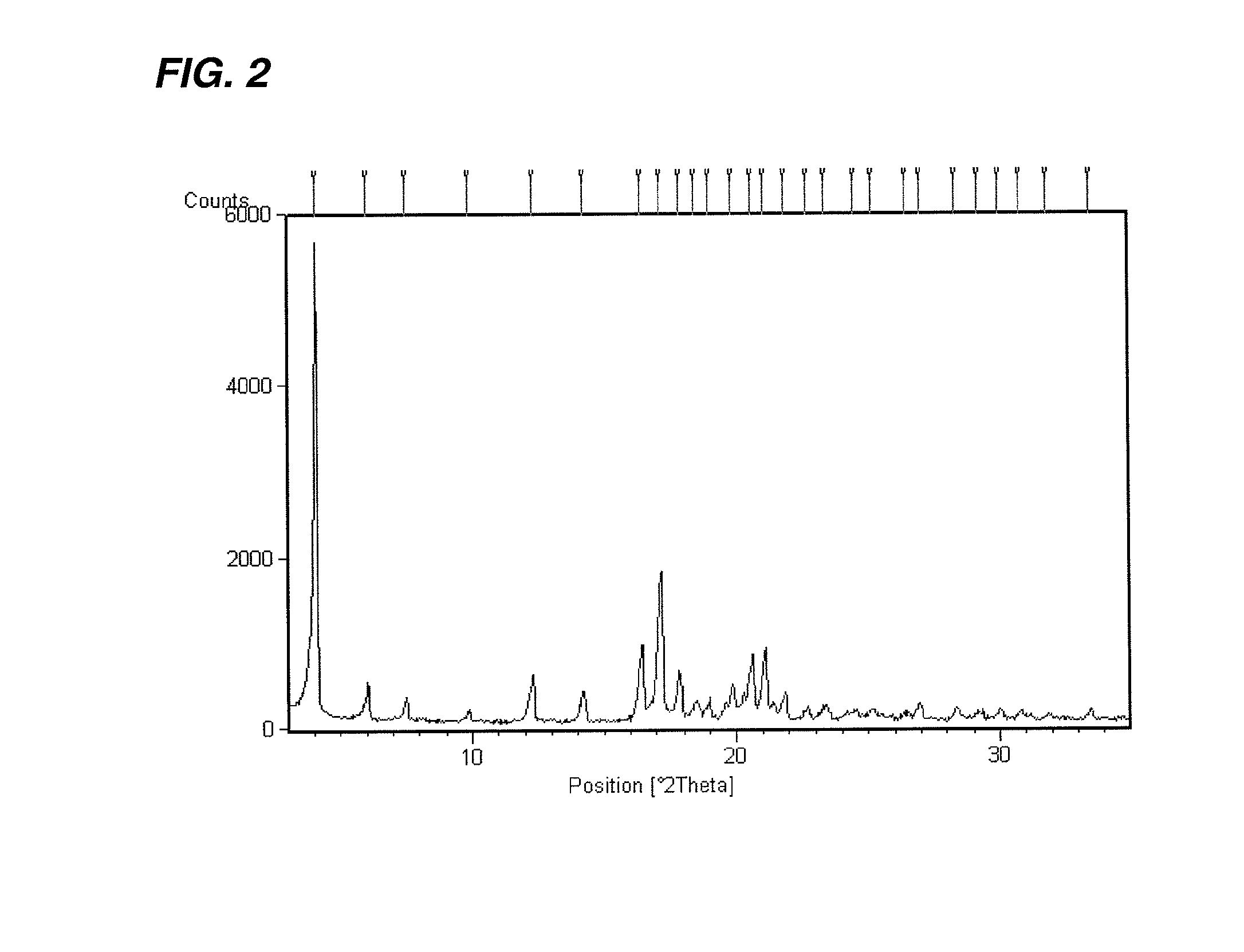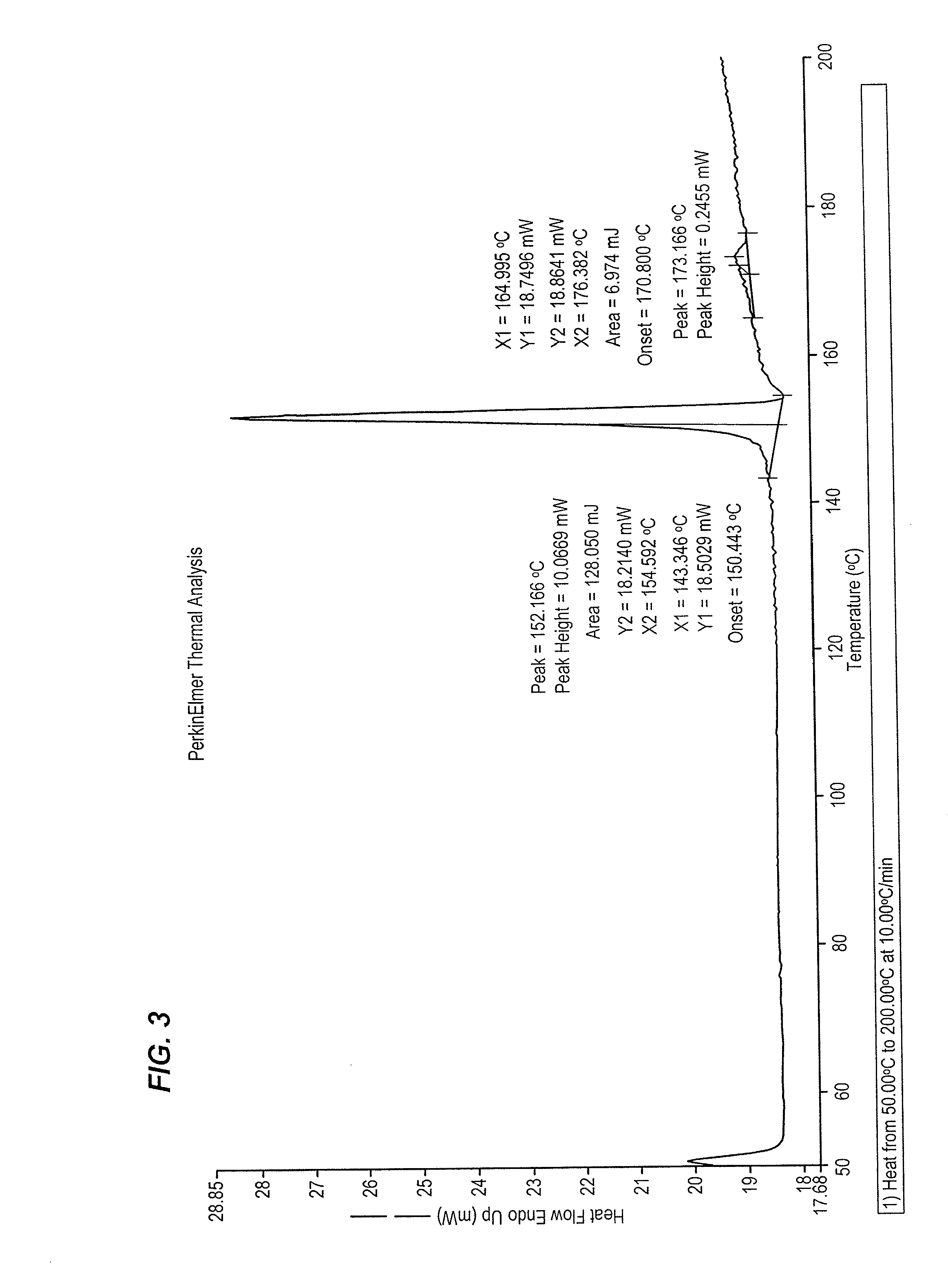Processes for the preparation of SGLT2 inhibitors
a technology of sglt2 and inhibitors, which is applied in the field of process for the preparation of sglt2 inhibitors, can solve the problems of undesired side effects, insufficient glycemic control,
- Summary
- Abstract
- Description
- Claims
- Application Information
AI Technical Summary
Benefits of technology
Problems solved by technology
Method used
Image
Examples
example 1
Preparation of (2S,3R,4R,5S,6R)-2-(4-chloro-3-(4-ethoxybenzyl)phenyl)-6-(hydroxymethyl)tetrahydro-2H-pyran-3,4,5-triol, bis(L-proline) Complex (1D)
[0136]
examples 1a
Preparation of (5-bromo-2-chlorophenyl)(4-ethoxyphenyl)methanone
[0137]
[0138]N,N-Dimethylforamide (9 mL) was added to a suspension of 5-bromo-2-chlorobenzoic acid (1500 g, 6.41 mol) and oxalyl chloride (975 g, 7.69 mol) in a 5 L 4-necked flask containing dichloromethane (2.8 L) at room temperature. Once the vigorous evolution of gas ceased, the reaction was stirred for 10 h at room temperature. The reaction mixture was concentrated under vacuum to give a yellow residue. The residue was dissolved in dichloromethane (1.2 L) in a 5 L 4-necked flask equipped with an internal thermometer and a water condenser. The stirred mixture was cooled to −3° C. and phenetole (799 g, 6.54 mol) was added. Aluminum (III) chloride (973 g, 6.54 mol) was added to the above solution via a solid addition funnel over 1 h while maintaining the internal temperature below 4° C. After the addition was complete, the reaction mixture was stirred for 2 h at 5˜10° C. The reaction was poured into ice (10 kg). The mix...
example 1b
Preparation of 4-bromo-1-chloro-2-(4-ethoxybenzyl)benzene
[0139]
[0140]To a stirred solution of Example 1A (1.440 kg, 4.26 mol) in anhydrous THF (7.2 L) under nitrogen was added sodium boronhydride (161 g, 4.26 mol) in one portion at 10˜15° C. After stirring for 30 min, the mixture was cooled to −5˜0° C. and aluminum (III) chloride (1136 g, 8.52 mol) was added carefully portionwise to the reaction mixture over 2 h. The reaction mixture was stirred at 0˜5° C. for 3 h after the addition. The reaction mixture was refluxed (65˜70° C.) for 15 h. The reaction was concentrated and water (5 kg) was added dropwise slowly in 3˜4 h under nitrogen atmosphere so that the internal temperature did not exceed 40° C. The reaction mixture was stirred for 3 h at 0˜5° C. The precipitate was filtered and washed with water (1.5 L). The crude product was then dissolved in 7.2 L absolute ethanol at 50˜55° C. The solution was slowly cooled to 25° C. in 3 h and at 10˜15° C. for 10 h, and 0˜5° C. for 2 h. The s...
PUM
| Property | Measurement | Unit |
|---|---|---|
| time | aaaaa | aaaaa |
| flow rate | aaaaa | aaaaa |
| chemical shifts | aaaaa | aaaaa |
Abstract
Description
Claims
Application Information
 Login to View More
Login to View More - R&D
- Intellectual Property
- Life Sciences
- Materials
- Tech Scout
- Unparalleled Data Quality
- Higher Quality Content
- 60% Fewer Hallucinations
Browse by: Latest US Patents, China's latest patents, Technical Efficacy Thesaurus, Application Domain, Technology Topic, Popular Technical Reports.
© 2025 PatSnap. All rights reserved.Legal|Privacy policy|Modern Slavery Act Transparency Statement|Sitemap|About US| Contact US: help@patsnap.com



